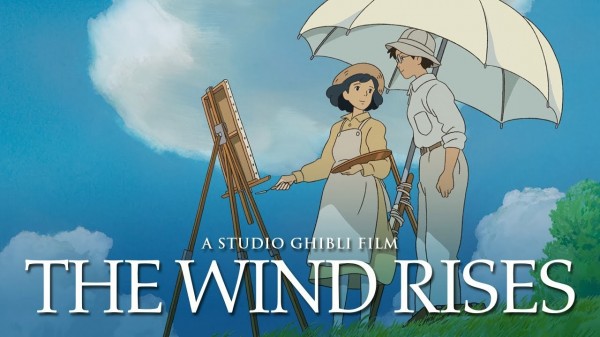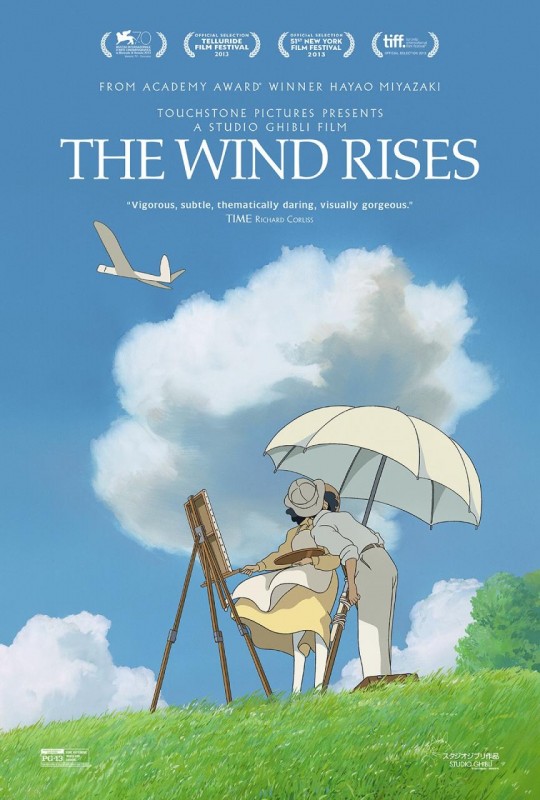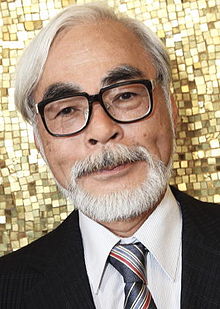While we still wait for the much anticipated home video release of Hayao Miyazaki’s The Wind Rises (Kaze Tachinu in its original language), it continues to take the festivals and awards ceremonies by storm. Starring dub voice actors Joseph Gordon-Levitt, Emily Blunt, Martin Short, and even the great Werner Herzog, the film has already accrued 17 accolades since its opening in Japan in July 2013 and February 2014 in America
The film follows up on a venture Miyazaki previously made with Grave of the Fireflies and also plays on themes including the tension between a simple way of life and advancing technological processes, guised under war, he has forever explored with films dating back to Nausicaa of the Valley of the Wind and onward with Princess Mononoke and Howl’s Moving Castle. Unfortunately, The Wind Rises is also Miyazaki’s explicit last film. While he has said this before, there is reason to believe he’s going to stick with it this time. Click ahead to read more about this must see, beautiful film.
While all of his films involve heavy influence in some form or another, The Wind Rises is surprisingly literary in its execution, beginning with the title, which directly mirrors the first line of the last stanza in Paul Valery’s “Graveyard by the Sea” (or “Le Cimetiere Marin” in the original French). Also, the film is based on a manga written by Miyazaki himself which in turn was loosely based on a short story from the 1930s titled “The Wind Has Risen” by Tatsuo Hori.
Naturally, wind plays a huge role in the film, causing pivotal meetings (or re-meetings) and staging the major accomplishments of protagonist Jiro. Interestingly enough, the story doesn’t focus as much on the war as it relies on its presence and impending effects as a backdrop. Instead, focus is given primarily to the relationship between Jiro and Nahoko, whose tuberculosis adds real weight to the period focus of the film. Additionally, Christina Rossetti’s “Who Has Seen the Wind” is quoted as the wind begins to rise (!) in a pivotal scene involving Jiro and Nahoko.
It is in this particular plot point that Miyazaki pays homage and close attention to Thomas Mann’s The Magic Mountain. It’s a German novel taking place just before the outbreak of World War I, in which a gentleman spends seven years in a tuberculosis ward in the mountainous environment of Davos. Often referred to as a Bildungsroman, the novel portrays a pre-war sense of life in Germany hailed as supremely nostalgic and ends with protagonist Hans Castorp headed off to fight in the war, his destiny unrevealed.
A number of tributes have been made to the film already. Among those most notable are a digital art submission by John Holmes, entitled “Tribute to Miyazaki’s The Wind Rises,” and even a Betfair Casino game titled “Wings of Gold.” . While these are hardly the first representations of tributes to Miyazaki’s work to find their way into the mainstream, it’s impressive that they’ve come about so quickly and with such an affectionate touch.
As always, Miyazaki displays his mastery in exactly articulating the smallest of details, with one of the most impressive scenes in the movie involving the character voiced by Werner Herzog playing the piano and singing “Das gibt’s nur einmal, das kommt nicht wieder” (“This Only Happens Once, It Doesn’t Come Again”). Each note of the song popularized by the German musical comedy “Der Kongre√ü tanzt” (“The Congress Dances”) is perfectly animated and in step. It is exactly this kind of gorgeous replication of the everyday details that makes a scene so magical. It also makes us already miss the in directory work of one Hayao Miyazaki.

 May 29th, 2014
May 29th, 2014  Beyond the Marquee
Beyond the Marquee 



 Posted in
Posted in 






